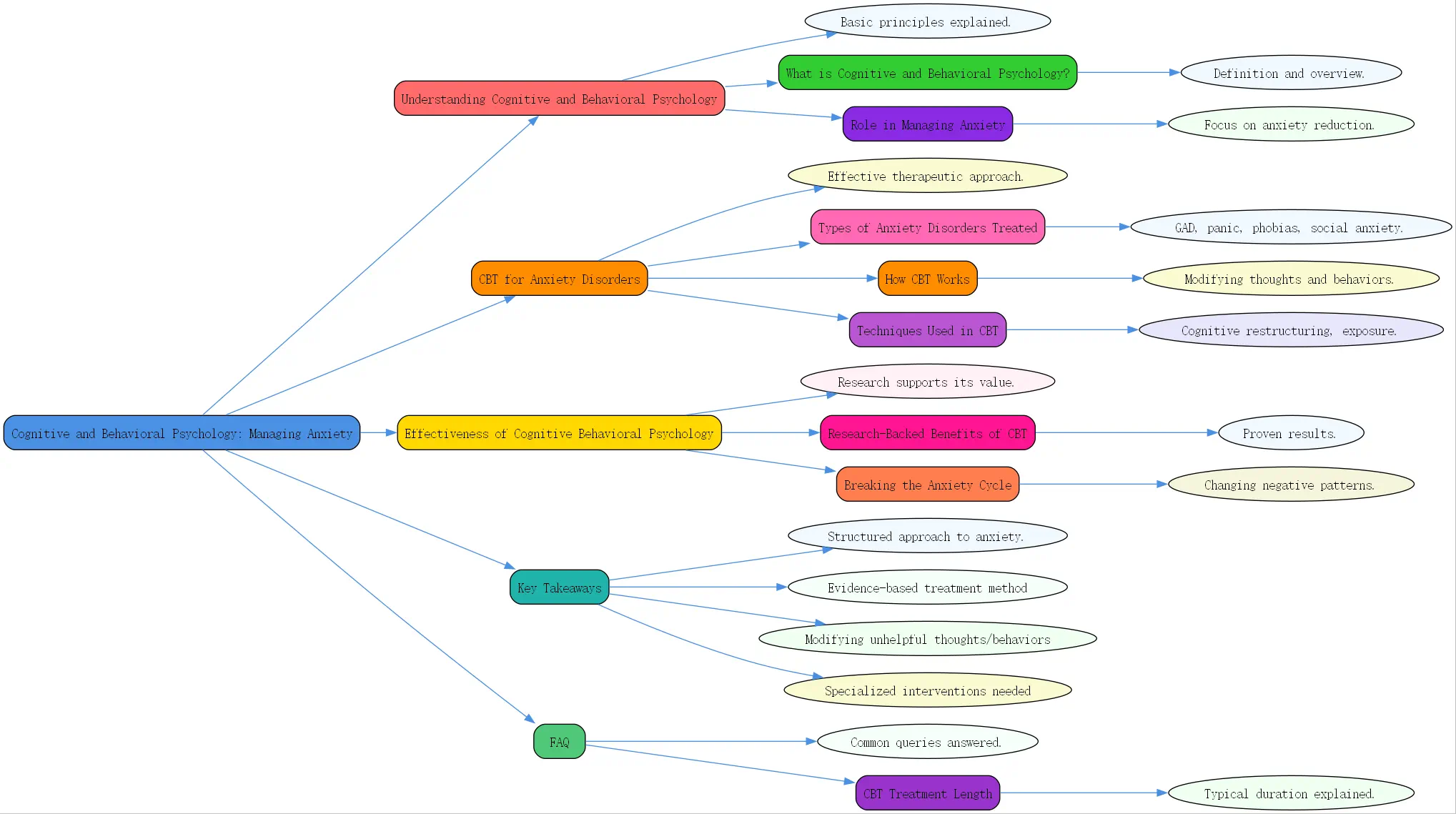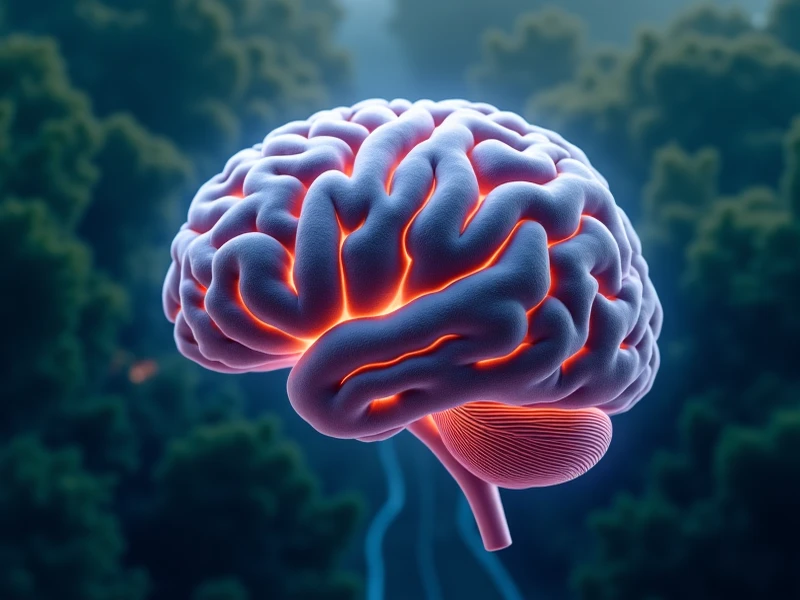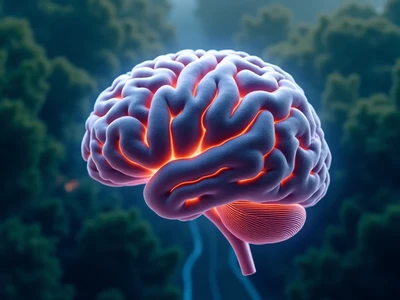Understanding Cognitive and Behavioral Psychology

What is Cognitive and Behavioral Psychology?
Cognitive and behavioral psychology represents a powerful integration of two complementary psychological approaches that form the foundation of modern psychotherapy. This field examines the intricate relationship between our thoughts (cognitions), feelings, and behaviors, recognizing that these elements constantly influence one another in a dynamic cycle. Unlike traditional talk therapy, which often focuses on exploring past experiences and unconscious motivations, cognitive and behavioral psychology emphasizes present patterns and practical solutions.
At BrainTalking, we recognize that cognitive and behavioral psychology offers a structured, evidence-based framework for understanding human psychology. This approach acknowledges that our thoughts directly impact our emotions, which in turn drive our behaviors. By identifying and modifying problematic thought patterns and behavioral responses, individuals can experience meaningful improvements in their psychological well-being.
The interconnection between thoughts, feelings, and behaviors forms what psychologists call the cognitive-behavioral triangle. For example, if you believe a presentation will go poorly (thought), you might feel anxious (emotion), which could lead you to avoid preparation or even call in sick (behavior). This avoidance then reinforces the original negative thought, creating a self-perpetuating cycle.
The Role of Cognitive and Behavioral Psychology in Managing Anxiety
Anxiety is a universal human experience and serves as a normal biological response to perceived threats. As Dr. Pamela Wigards, a renowned psychologist, explains, “”Everyone has anxiety. Anxiety is a normal biological response to perceived threat, but our body’s way of protecting us from danger can sometimes backfire and interfere or impair our daily lives.””

This protective mechanism has evolved to help us navigate potential dangers. However, the complexity of modern life sometimes causes this system to malfunction, triggering anxiety responses in situations that don’t warrant such intense reactions. When anxiety becomes excessive, persistent, and begins to interfere with daily functioning, it crosses the threshold into a clinically significant anxiety disorder.
Behavioral psychology and cognitive psychology, when combined as cognitive behavioral psychology, offer a comprehensive framework for understanding and addressing anxiety disorders. The goal isn’t to completely eliminate anxiety—which would be both impossible and undesirable—but rather to manage it effectively. As Dr. Wigards notes, “”Anxiety is a protective response when we need it, so we’re not trying to eradicate anxiety here. We’re just trying to figure out how to manage it more effectively and to keep it in that range where anxiety is actually useful and helpful and not interfering with life.””
Through proven anxiety management techniques psychology, individuals can learn to recognize when their anxiety response is disproportionate to the actual threat and develop strategies to bring it back to a functional level.
Cognitive Behavioral Therapy (CBT) for Anxiety Disorders
Types of Anxiety Disorders Treated with CBT
Cognitive and behavioral psychology provides effective treatments for several types of anxiety disorders, each with distinct characteristics but sharing common features of excessive fear and avoidance behaviors.
Generalized Anxiety Disorder (GAD) presents as what Dr. Wigards describes as “”future-oriented what-if thinking with worries about a number of life areas and fear of catastrophic future outcomes.”” Individuals with GAD often find themselves caught in a constant loop of worry about various aspects of their lives, from health and finances to relationships and work performance. These concerns typically extend far beyond reasonable preparation and into excessive rumination that provides no practical benefit.
Panic Disorder manifests differently, characterized by “”unexpected and repeated episodes of intense fear accompanied by physical symptoms—racing heart or shortness of breath and perhaps sweating.”” These panic attacks often appear to come “”out of the blue,”” creating a terrifying experience that can lead to fear of future attacks.
Specific Phobias involve intense, irrational fears of particular objects or situations. Whether it’s elevators, airplanes, snakes, or medical procedures, these phobias trigger strong fear responses and deliberate avoidance behaviors that can significantly restrict a person’s life choices and experiences.
Social Anxiety Disorder occurs when “”fear arises from everyday social interactions or performance situations resulting in anxiety, fear of embarrassment, or negative evaluation by others.”” People with social anxiety may avoid parties, public speaking, or even casual conversations, leading to isolation and missed opportunities.
Behavioral and cognitive psychology offers specialized interventions for each of these anxiety disorders, tailored to address their specific manifestations while leveraging common therapeutic principles.
How Cognitive Behavioral Therapy (CBT) Works
Cognitive Behavioral Therapy represents the gold standard in anxiety treatment within cognitive and behavioral psychology. Unlike traditional psychotherapy that might extend indefinitely, CBT is intentionally collaborative, time-limited, and structured. This approach positions the therapist and client as partners in the healing process, working together to identify problematic patterns and develop effective solutions.
CBT operates on the fundamental premise that our thoughts and behaviors directly influence our emotional experiences. By methodically examining and modifying these elements, individuals can experience significant symptom relief and improved functioning.

The process typically begins with a thorough assessment to understand the specific nature of a person’s anxiety and its impact on daily life. From there, the therapist and client collaborate to identify patterns in thoughts and behaviors that contribute to anxiety maintenance. These might include catastrophic thinking, avoidance behaviors, or safety-seeking rituals that provide temporary relief but ultimately reinforce anxiety.
Once these patterns are recognized, clients develop targeted skills to interrupt and change them. Through regular practice both in and between sessions, these new approaches gradually become habitual, replacing the problematic patterns that previously maintained anxiety.
Techniques Used in Cognitive Behavioral Therapy (CBT)
Cognitive behavioral psychology employs a diverse toolkit of evidence-based techniques to address anxiety disorders. One crucial skill involves identifying cognitive errors or distortions that fuel anxiety.
All-or-nothing thinking represents a common cognitive distortion where individuals see situations in extreme, black-and-white terms. As Dr. Wigards explains, this is “”where someone sees events as either good or bad, perfect or awful, with no shades of gray in between.”” For example, a person with social anxiety might interpret a single awkward moment in a conversation as evidence that the entire interaction was a complete disaster, ignoring any positive aspects of the exchange.
Through CBT work, clients learn to recognize these distorted thinking patterns and develop more balanced perspectives. This might involve examining evidence for and against a particular thought, considering alternative interpretations, or identifying more helpful ways of framing situations.
Another key focus in behavioral cognitive psychology involves addressing avoidance behaviors that maintain anxiety. While avoiding anxiety-provoking situations provides immediate relief, it prevents individuals from learning that they can cope with discomfort and that feared outcomes rarely materialize. CBT helps clients gradually confront feared situations through structured exposure exercises, building confidence and breaking the cycle of avoidance.
These proven anxiety management techniques psychology work together to transform how individuals respond to anxiety triggers, allowing them to navigate previously feared situations with greater ease and confidence.
The Effectiveness of Cognitive Behavioral Psychology and CBT
Research-Backed Benefits of CBT
The scientific evidence supporting the efficacy of cognitive behavioral psychology for anxiety disorders is robust and extensive. Numerous well-designed studies have consistently demonstrated that CBT improves anxiety symptoms across various disorders and populations. This research base gives CBT a significant advantage over less empirically validated approaches.
What’s particularly remarkable about CBT’s effectiveness is that its benefits extend beyond symptom reduction to enhance overall functioning and quality of life. Clients typically experience improvements in work performance, relationship satisfaction, and general well-being. Moreover, these gains tend to persist long after treatment concludes, highlighting the sustainable nature of the skills developed through cognitive and behavioral psychology approaches.
The research also indicates that CBT compares favorably to medication treatments for anxiety, often producing equivalent short-term outcomes with superior long-term results. This effectiveness, combined with the absence of medication side effects, makes CBT an appealing first-line treatment for many individuals struggling with anxiety disorders.
At BrainTalking, we emphasize these research-backed approaches because they provide our clients with the highest probability of meaningful and lasting improvement. The consistent empirical support for cognitive behavioral psychology reinforces our commitment to evidence-based treatment methods.

Behavioral Cognitive Psychology: Breaking the Anxiety Cycle
Behavioral and cognitive psychology works systematically to disrupt the self-perpetuating cycle of anxiety. This cycle typically involves anxious thoughts triggering physical symptoms, which then intensify worried thinking, creating a spiral of escalating distress. Through CBT, individuals learn to recognize this pattern and intervene at various points to break the cycle.
As Dr. Wigards notes, “”CBT is a form of psychotherapy based on the idea that our thoughts and behaviors impact how we feel. With these strategies, we can learn how to cope better and manage anxiety more effectively.”” This approach acknowledges anxiety as a complex experience with cognitive, physical, and behavioral components that require comprehensive intervention.
By targeting maladaptive thoughts, clients learn to challenge catastrophic thinking and develop more balanced perspectives. Simultaneously, they acquire skills to manage physical symptoms through techniques like deep breathing, progressive muscle relaxation, and mindfulness. On the behavioral front, they gradually confront avoided situations to build confidence and resilience.
The combined impact of these cognitive and behavioral interventions creates multiple pathways for breaking free from anxiety’s grip. As clients implement these strategies consistently, they experience a decreasing frequency and intensity of anxiety episodes, allowing them to engage more fully in meaningful life activities.
Why Behavioral Psychology and Cognitive Psychology Matter
Despite the well-documented effectiveness of behavioral psychology and cognitive psychology approaches, only about one-third of adults with anxiety disorders seek treatment. This treatment gap represents a significant public health concern, as untreated anxiety typically becomes more entrenched over time and can lead to additional complications like depression or substance use disorders.
Several factors contribute to this reluctance to seek help, including stigma, lack of information about treatment options, financial constraints, and skepticism about therapy effectiveness. However, as awareness of cognitive and behavioral psychology increases, more individuals are recognizing that effective, evidence-based treatments exist for anxiety disorders.
Understanding the principles of cognitive and behavioral psychology can benefit everyone, not just those with diagnosed anxiety disorders. We all face stressful situations and periods of heightened worry. Having a basic understanding of how thoughts influence emotions and behaviors provides valuable tools for navigating these challenges effectively.
For those experiencing significant anxiety, seeking professional guidance is crucial. As Dr. Wigards emphasizes, “”We all experience anxiety, especially in stressful times, but with effective treatments [like CBT], we can learn how to respond differently, manage symptoms, and keep anxiety from interfering with the things that are important to us.””
Implementing proven anxiety management techniques psychology can transform the experience of anxiety from an overwhelming force to a manageable aspect of life. Through cognitive and behavioral psychology approaches, individuals can reclaim control and pursue meaningful goals even in the presence of anxiety.
Key Takeaways on Cognitive and Behavioral Psychology for Anxiety
- Cognitive and behavioral psychology provides a structured, evidence-based approach to understanding and treating anxiety disorders
- CBT works by identifying and modifying unhelpful thought patterns and behaviors that maintain anxiety
- Various anxiety disorders (GAD, panic disorder, phobias, social anxiety) share common features while requiring specialized interventions
- Research consistently shows CBT’s effectiveness in reducing anxiety symptoms and improving quality of life
- Learning to recognize cognitive distortions like all-or-nothing thinking is essential to managing anxiety
- The goal isn’t to eliminate anxiety completely but to manage it effectively so it doesn’t interfere with daily functioning
- Despite proven effectiveness, only about one-third of adults with anxiety disorders seek treatment
FAQ: Common Questions About Cognitive and Behavioral Psychology
How long does CBT treatment typically take for anxiety disorders?
CBT for anxiety disorders is designed to be relatively brief compared to traditional psychotherapy approaches. Most standard CBT protocols range from 12-20 weekly sessions, though this can vary based on the specific anxiety disorder, symptom severity, and individual progress. Some research suggests that even shorter interventions can be effective for milder anxiety concerns.
Unlike open-ended therapy, CBT follows a structured approach with clear treatment goals and regular progress monitoring. This time-limited nature makes CBT both cost-effective and focused on developing skills that clients can continue implementing independently after formal treatment concludes.




